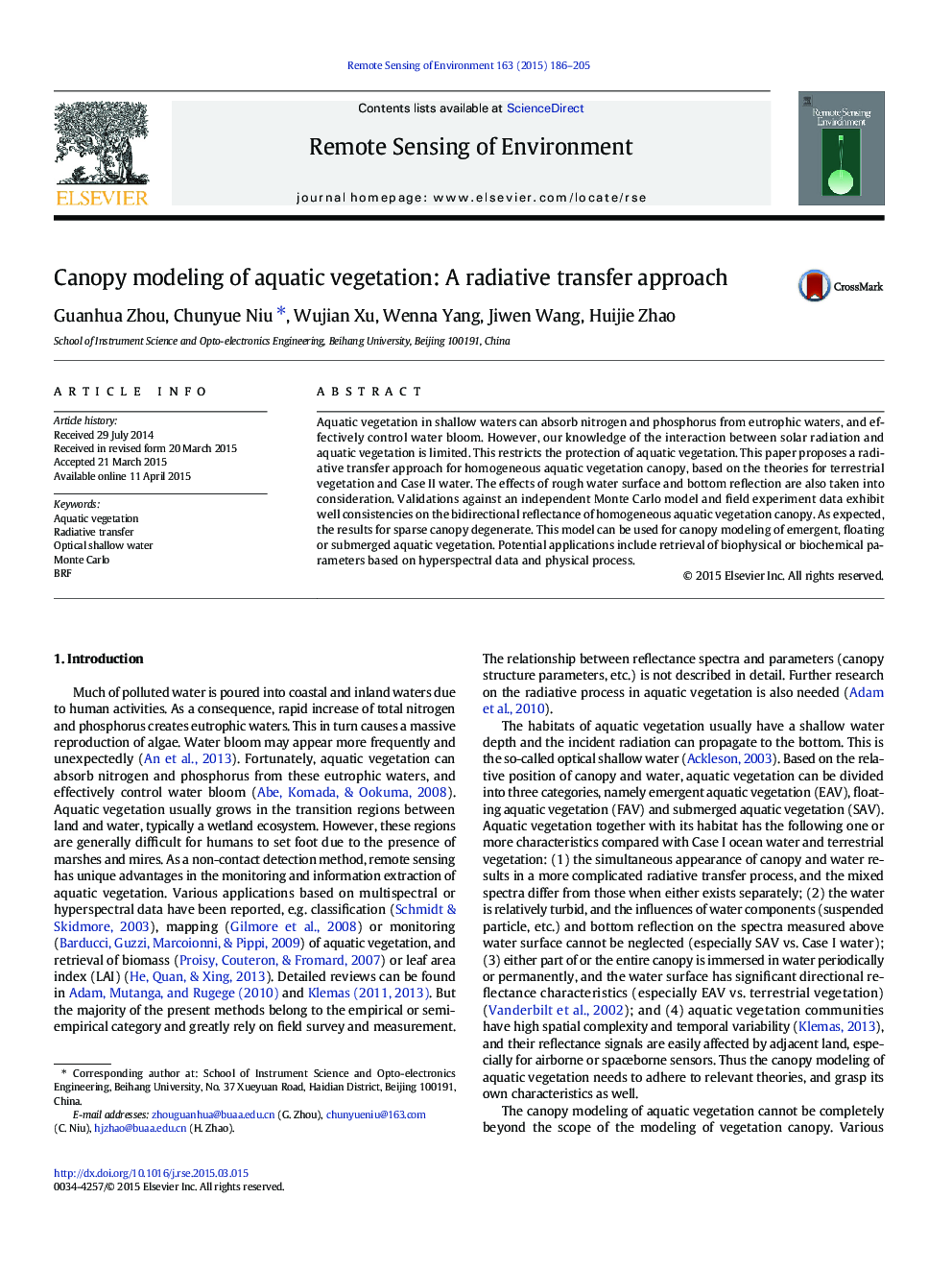| Article ID | Journal | Published Year | Pages | File Type |
|---|---|---|---|---|
| 6346117 | Remote Sensing of Environment | 2015 | 20 Pages |
â¢A multi-layered bidirectional spectral reflectance model of aquatic vegetationâ¢Can handle emergent, floating and submerged aquatic vegetationâ¢Rough water surface, turbid water and bottom are considered.â¢A new Monte Carlo model is used for comparison and validation.â¢Can be applied to spectra analysis and retrieval of aquatic vegetation
Aquatic vegetation in shallow waters can absorb nitrogen and phosphorus from eutrophic waters, and effectively control water bloom. However, our knowledge of the interaction between solar radiation and aquatic vegetation is limited. This restricts the protection of aquatic vegetation. This paper proposes a radiative transfer approach for homogeneous aquatic vegetation canopy, based on the theories for terrestrial vegetation and Case II water. The effects of rough water surface and bottom reflection are also taken into consideration. Validations against an independent Monte Carlo model and field experiment data exhibit well consistencies on the bidirectional reflectance of homogeneous aquatic vegetation canopy. As expected, the results for sparse canopy degenerate. This model can be used for canopy modeling of emergent, floating or submerged aquatic vegetation. Potential applications include retrieval of biophysical or biochemical parameters based on hyperspectral data and physical process.
